
Soils provide the foundation of crop production systems and there are several chemical properties worthy of our attention (Parikh and James, 2012). In consideration of the three main categories (physics, chemistry, and biology) describing a soil system in relation to soil health, soil chemical properties represent an extremely important aspect of healthy soil function (Figure 1).
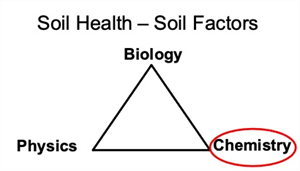
Figure 1. Soil health factors and chemical properties.
The solid phase of soils is composed of both mineral and organic components. The mineral portion of the soil consists of sand, silt, and clay fractions. In this article, the focus is on the mineral portion of the soil system and the basis of soil cation exchange capacity (CEC).
The relative proportions of sand, silt, and clay fractions define the soil texture (Figure 3). Soil texture is probably the most fundamental characteristic of a soil since it affects many of the important physical, biological, and chemical processes in a soil. Despite any management practice that is used in a field, the soil texture changes very little over time.
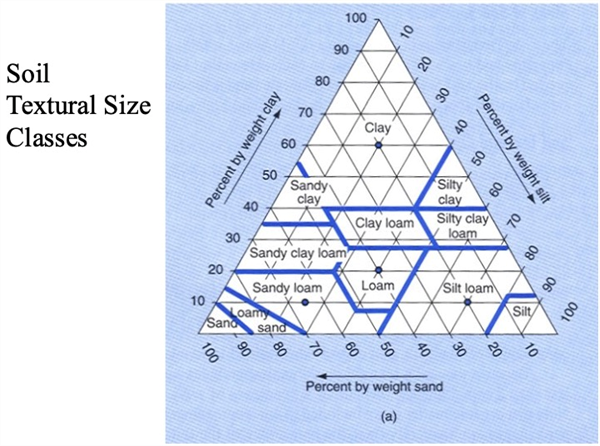
Figure 2. Soil textural triangle.
One aspect of soil texture that is very important in relation to soil chemical properties is the clay or colloidal fraction, particles less than 0.002 mm or the less than 2 µm (micron) in diameter. This is important because of the extremely small size of the particles which renders a very large amount of surface area among the clay particles or the soil colloidal fraction (Figure 3).
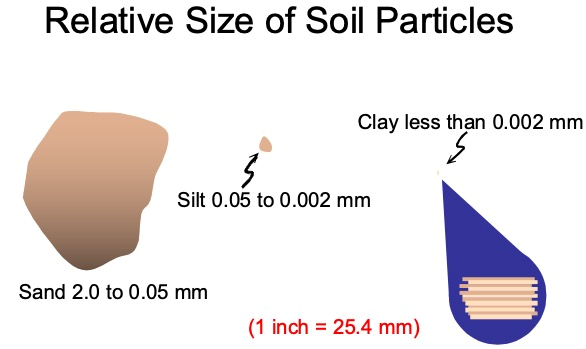
Figure 3. Relative size of soil particles.
In the natural process of soil formation and both chemical and physical weathering the secondary clay minerals, layer silicates, are formed. Fine-grained micas, chlorite, and vermiculite are formed through the basic processes of weathering of primary aluminosilicate minerals. Kaolinite and oxides of iron and aluminum are products of much more intense or longer duration weathering.
Soil composition is a direct reflection of the materials from which they are made. Parent material for the mineral fraction of soils are normally the primary aluminosilicate minerals. As the name implies, these minerals are made from aluminum (Al), silicon (Si), and oxygen (O). Collectively, these elements account for approximately 82 % of the earth’s crust by weight. On a mass basis, O and Si are extremely important and are dominate components in mineral soils (Table 1).
|
Element |
% by Weight |
Element |
% by Weight |
|
O (oxygen) |
46.5 |
Ca (calcium) |
3.6 |
|
Si (silicon) |
27.6 |
Mg (magnesium) |
2.1 |
|
Al (aluminum) |
8.1 |
Na (sodium) |
2.8 |
|
Fe (iron) |
5.1 |
K (potassium) |
2.6 |
Table 1. Average chemical composition of the earth's crust.
In soil minerals, both Si and Al are found as small, highly charged positive cations (Al3+ and Si4+), which coordinate with the larger and negatively charged O anion (O2-) to form silica tetrahedron and the aluminum octahedron. In both structures, the small central ions are surrounded by either four or six O2- or OH- ions in coordination which serve to "hide" the cations and expose the O or OH groups to the soil solution. On a volume basis, the larger anions dominate the soil minerals, both primary and secondary (Brady and Weil, 2008; Magdoff, and van Es, 2021).
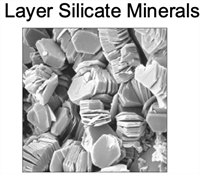
Layer silicate clays
These important silicate clays are also known as phyllosilicates (Phyllon - leaf)
because of their leaf-like or plate like structure. These are made up of two kinds of
horizontal sheets. One dominated by silicon and other by aluminum and/or magnesium.
Silica tetrahedron: The basic building block for the silica-dominated sheet is a
unit composed of one silicon atom surrounded by four oxygen atoms. It is referred to as
the silica tetrahedron because of its four-sided configuration. It is based on an interlocking array or a series of these silica tetrahedra tied together horizontally by shared oxygen anions rendering a tetrahedral sheet (Figure 4).
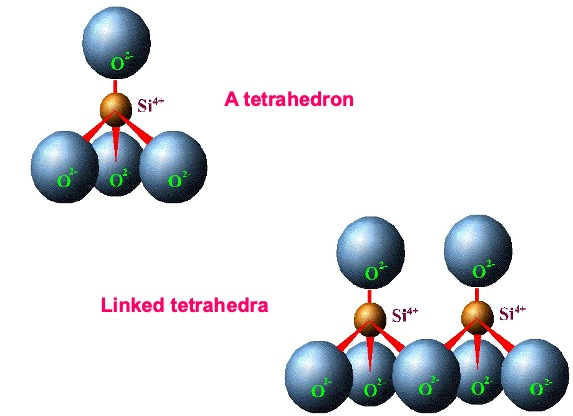
Figure 4. Layer silicate silicon tetrahedral structure.
Alumina octahedron: Aluminium and/or magnesium ions are the key cations surrounded by six oxygen atoms or a hydroxyl (OH-) group giving an eight-sided building block referred to as an octahedron. Numerous octahedra linked together horizontally comprise the octahedral sheet (Figure 5).

Figure 5. Layer silicate aluminum octahedral structure.
An aluminum-dominated sheet is known as a di-octahedral sheet, whereas one dominated by magnesium is called a tri-octahedral sheet.
The distinction is due to the two aluminum ions in a di-octahedral sheet that satisfy the same negative charge from surrounding oxygen and hydroxyls as three magnesium ions in a tri-octahedral sheet.
The tetrahedral and octahedral sheets are the fundamental structural units of silicate clays. These sheets are bound together within the crystals by shared oxygen atoms into different layers. The specific nature and combination of sheets in these layers vary from one type of clay to another and control the physical and chemical properties of each specific type of clay (Figure 6 and Table 2).
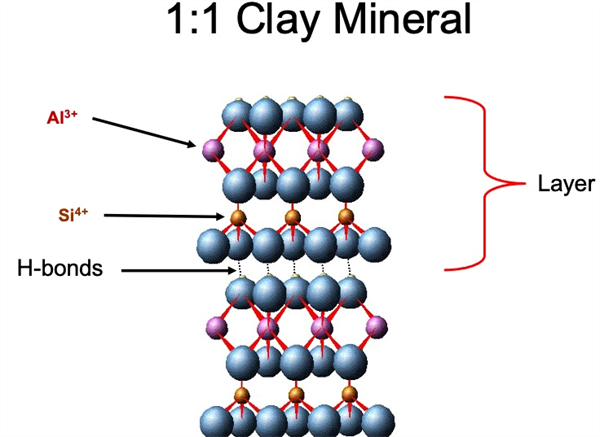
Figure 6. One to one clay mineral structure.
Isopmorphous Substitution
In some of the silica tetrahedra, Si4+ is replaced by Al3+ and the charge deficit (a net negative charge) is balanced by monovalent (single charge) or divalent (two charge unit) cations.
Similarly, in the octahedra, Al3+ may be replaced by Mg2+ or other divalent cations. This replacement also generates a net negative charge deficit that must be balanced by cations that are not an integral part of the octahedral or tetrahedral network.
In the cases of silica tetrahedra and aluminum octahedra, the substituting ions are of similar size. Thus, this exchange process is referred to as “isomorphous” substitution. Where “iso” means “same or similar” and “morphic or morphous” refers to the physical size and structure. This substitution refers to similar sized ion replacement but with different charge characteristics (Figures 7 and 8).

Figure 7. Isomorphic substitution in a clay mineral structure.
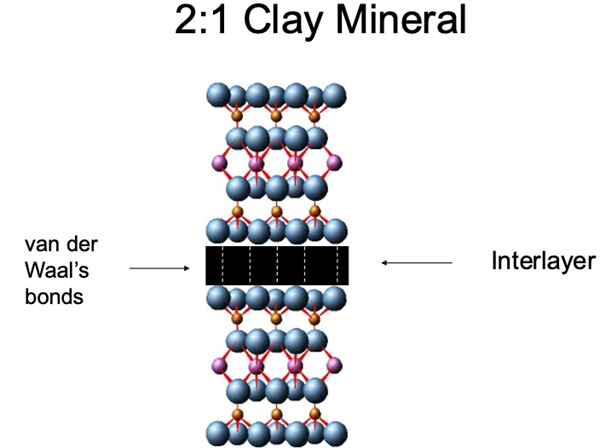
Figure 8. Two to one (2:1) clay mineral structure (two Si tetrahedrons and one
Al octahedral sheet in each layer) and the van der Waal’s bonds linking or
stacking the 2:1 layers.
Cation Exchange Capacity (CEC)
The result of this ionic substitution is a net negative charge on the surface of clay particles. The net negative on the soil clay or colloidal fraction provides a reactive surface of clay minerals that interact with cations (e.g., K+, Mg2+, Ca2+, Na+, etc.) in soil solution (Figure 8).
Thus, the greater the clay or colloidal fraction in the soil solid phase, the greater the reactive capacity the soil has. Since the net clay or colloid surface is negative, the reactions with the soil solution involve cations, both mineral and organic. Thus, this exchange phenomenon is referred to as “the cation exchange capacity, CEC” (Figure 8 and Table 2).
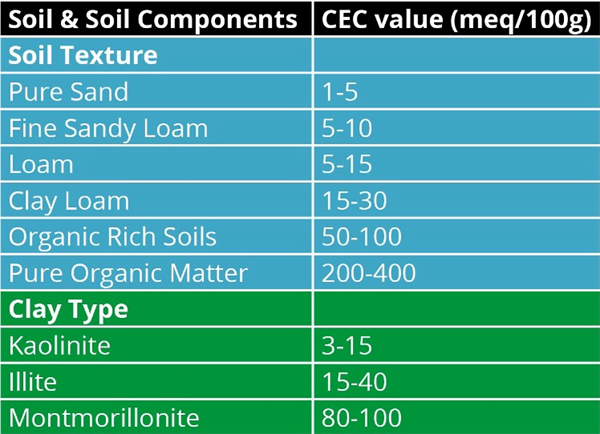
Table 2. Relationship between soil texture and clay type to the cation
exchange capacity (CEC, meq/100g).
The higher the soil CEC, the greater nutrient holding and exchange capacity of the soil. This aspect of a soil system also determines the water holding capacity to a very large extent because of the physical/chemical interaction between the soil colloid surface and water molecules (Figure 9).
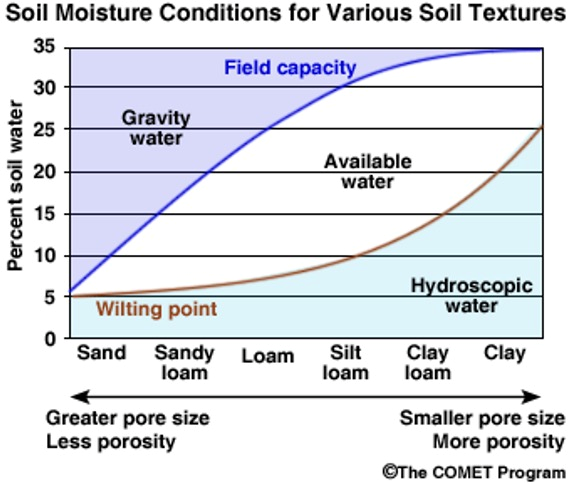
Figure 9. Soil-water holding capacity as a function of soil texture. Source: The
COMET program. University Corporation of atmospheric research.

Figure 10. A plant root hair extending into soil solution and interacting with
adjacent soil particles and cation exchange.
Healthy soil exhibits a full expression of the solid phase chemical capacity and function, including the cation exchange capacity (CEC), which largely defines the nutrient holding and exchange capacity of the soil (Figure 10). In this manner, a healthy soil system helps support healthy crops.
References:
Brady, N.C. and R.R. Weil. 2008. The Nature and Properties of Soils, 14th ed. Prentice Hall: Upper Saddle River, NJ.
Magdoff, F. and H. van Es, 2021. Soil Particles, Water and Air. In: Building Soils for Better Crops Sustainable Agriculture Research & Education Outreach Program. Chapter 5.
Parikh, S. J. and B.R. James. 2012. Soil: The Foundation of Agriculture. Nature Education Knowledge 3(10):2
https://www.nature.com/scitable/knowledge/library/soil-the-foundation-of-agriculture-84224268/#
I hope you are frolicking in the fields of wildflowers picking the prettiest bugs.
I was scheduled to interview for plant pathologist position at Yuma on October 18, 2019. Few weeks before that date, I emailed Dr. Palumbo asking about the agriculture system in Yuma and what will be expected of me. He sent me every information that one can think of, which at the time I thought oh how nice!
When I started the position here and saw how much he does and how much busy he stays, I was eternally grateful of the time he took to provide me all the information, especially to someone he did not know at all.
Fast forward to first month at my job someone told me that the community wants me to be the Palumbo of Plant Pathology and I remember thinking what a big thing to ask..
He was my next-door mentor, and I would stop by with questions all the time especially after passing of my predecessor Dr. Matheron. Dr. Palumbo was always there to answer any question, gave me that little boost I needed, a little courage to write that email I needed to write, a rigid answer to stand my ground if needed. And not to mention the plant diagnosis. When the submitted samples did not look like a pathogen, taking samples to his office where he would look for insects with his little handheld lenses was one of my favorite times.
I also got to work with him in couple of projects, and he would tell me “call me John”. Uhh no, that was never going to happen.. until my last interaction with him, I would fluster when I talked to him, I would get nervous to have one of my idols listening to ME? Most times, I would forget what I was going to ask but at the same time be incredibly flabbergasted by the fact that I get to work next to this legend of a man, and get his opinions about pest management. Though I really did not like giving talks after him, as honestly, I would have nothing to offer after he has talked. Every time he waved at me in a meeting, I would blush and keep smiling for minutes, and I always knew I will forever be a fangirl..
Until we meet again.
Based on the recent weather, it’s definitely summer in my book. Things seem to be slowing down, so I thought I’d change pace this week and take the opportunity to ask you, the readers of this newsletter, if there are any ag automation/mechanization topics you would be interested in hearing more about. I am happy to do some research and share the findings in future articles. Drop me a line at siemens@cals.arizona.edu or feel free to call me at 928.782.5869. I’d love to know your interests.
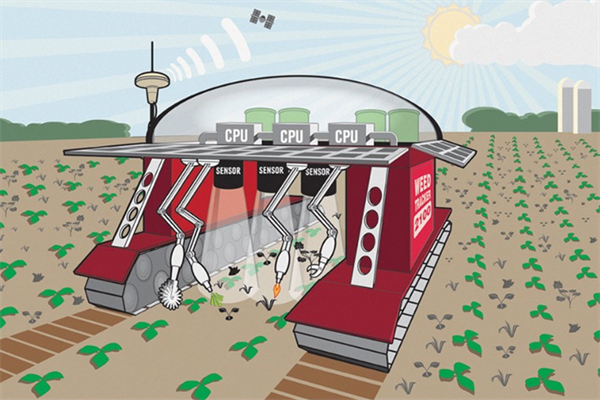
Fig. 1. Futuristic weeding. (Image credits: S.L. Young)
With every irrigation we continue having new generations of weeds germinating. Herbicides with a good soil residual are very useful for extending good control for a longer period. The ideal scenario would be that the herbicide is present only when we need it and dissipate when we rotate to a sensitive crop. This can become a challenge when we have products that have a long soil residual. Sometimes herbicides have a low use rates and long residuals. As an example, we have some of the sulfonylureas and imidazolinones that are highly effective but have to be carefully used for some scenarios. Some of the factors affecting the persistence of herbicides are the soil characteristics, herbicidal characteristics, and environmental conditions1.
The University of Nevada, Reno explained that problems can occur when soil where sterilant products has been applied is moved or blows from the application site to other part of a field2. Interestingly recently the IPM Team received a report of a field of radishes with injury in a pattern that was consistent with the passes of the disk. It appears that accidentally a high rate of DCPA and metholachlor was applied previously. Even after land prep and irrigations the crop presented phytotoxicity symptoms. Also, a celery field located South of a treated, dusty non-agricultural area presented injury consistent with the wind blow. The damage was more severe closer to the treated area (North) and gradually disappeared as walking South into the celery field. Similarly, it has been reported that compost can be contaminated with herbicides such as clopyralid when treated plants are added to the compost mix causing symptoms to lettuce.
Reference:
1. Retrieved from: https://ag.arizona.edu/crops/vegetables/advisories/more/weed31.html
2. University of Nevada Reno: https://extension.unr.edu/publication.aspx?PubID=3322